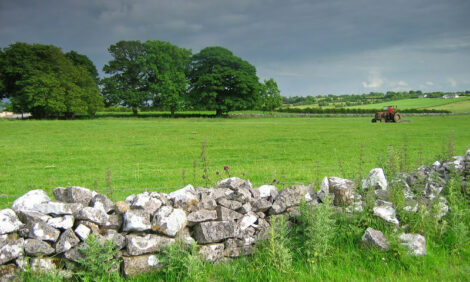



Does Sex Classification Affect Beef Tenderness
CENTENNIAL – Checkoff report looks at pre-harvest heifer management to minimize variancesDoes Sex Classification Affect Beef Tenderness CENTENNIAL – Checkoff report looks at pre-harvest heifer management to minimize variances
Tenderness, the gold standard for beef products, is a complex trait influenced by a variety of factors, many of which can be managed to reduce the incidence of tenderness problems in the final product. One inherent tenderness variation often overlooked in pre-harvest management plans, however, is sex classification, according to a new beef checkoff-funded report.
“Beef product tenderness has been determined to be a very important component of consumer satisfaction and, therefore, research that gives the industry information to improve our product’s tenderness will ultimately improve demand for beef,”
Bill Rishel, chairman of the Joint Product Enhancement Research Committee.
Young, grain-fed steers and heifers make up 80 percent of cattle processed each year in federally inspected U.S. beef plants. Steers comprise about one-half of the total federally inspected harvest, while heifers represent about 30 percent of the slaughter mix.
Heifers typically outperform steers in marbling and USDA quality grade, but product tenderness usually favors steers, according to Pre-Harvest Factors Affecting Beef Tenderness in Heifers, a beef checkoff-funded report by Colorado State University meat scientists J.D. Tatum, Ph.D., S.L. Gruber and B.A. Schneider.
“Beef product tenderness has been determined to be a very important component of consumer satisfaction and, therefore, research that gives the industry information to improve our product’s tenderness will ultimately improve demand for beef,” said Bill Rishel, a Nebraska producer and chairman of the Joint Product Enhancement Research Committee.
Authors reviewed 10 studies conducted between 1985 and 2006 and compared Warner-Bratzler sheer force (WBSF) values on the major muscle in the rib and loin for both heifers and steers. In eight of the 10 comparisons, the WBSF was significantly higher for heifers than steers. The standardized mean sex effect on muscle WBSF values, computed across all 10 studies, was 0.25. (the lower the WBSF value, the more tender the beef).
Among identified factors that could account for the difference: (1) Differences between heifers and steers in levels of enzymes that break down bovine proteins and “age” beef and (2) The effect of estrogen on heifers, making them generally more excitable and susceptible to pre-harvest stress. Evidence also suggests that intact heifers have higher hormone levels compared to steers and spayed heifers, resulting in tougher beef from the intact animal. Other studies, however, have suggested that spaying has little effect on heifer beef tenderness.
Management techniques include estrus suppression, non-aggressive handling and careful use of finishing implants, if these products are used.
For more information or to view a full report, visit www.beefresearch.org and click on “Product Enhancement Research Executive Summaries” or call the checkoff customer service department, 800-368-3138, to order a copy for $3 on a cost-recovery basis. (Reference item #12812)
TheCattleSite News Desk


